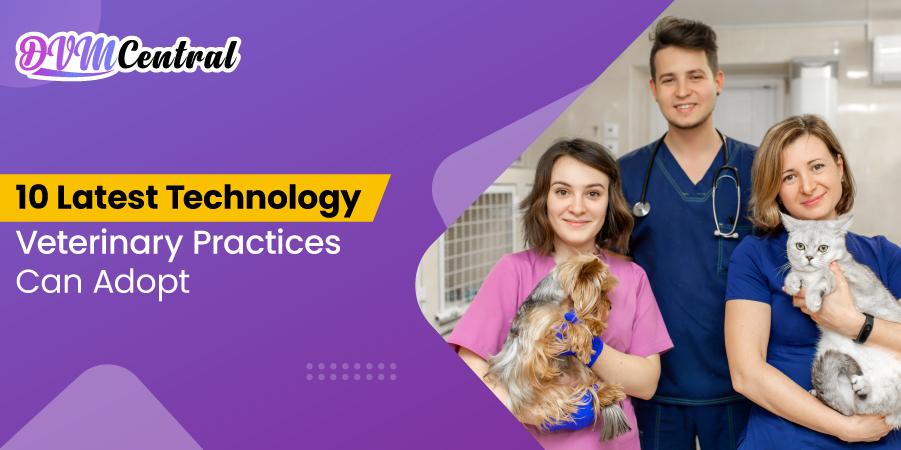Running a modern veterinary clinic takes more than exceptional medical skills. The best performing clinics in the current world use state-of-the-art technologies that automate work on a day-to-day basis, improve animal health, and offer an improved client experience.
From cloud-based practice management software and electronic medical records (EMRs) to telehealth platforms and artificial intelligence tools, technology is transforming the operations of veterinary personnel. Such tools assist with minimizing errors, saving time, monitoring results, and even anticipating patient requirements.
But technology, by itself, won't transform a clinic into one that's efficient; the individuals working behind it do. That's where veterinary technicians and professionals enter the picture. They serve as the connection that connects strategy, systems, and personnel.
Practice managers or veterinary technicians are the backbone of a well-run clinic, whether they are responsible for maintaining operations, training employees, or implementing new technologies. This article is for you if you're planning to update your clinic by adopting modern technologies. We’ll cover:
- What a veterinary practice manager does and why the role matters
- Career opportunities and salary insights
- The 10 latest technologies veterinary practices can adopt
- Practical tips to implement new technologies/systems successfully
Who is a Veterinary Practice Manager?
A veterinary technician or manager runs the entire clinic. They are the leaders in the background who ensure that everything is organized, including the books and appointment scheduling.
But for them, it's more than simply paperwork and scheduling. They run the team, budgets, and technology, and make sure that clients and their pets receive optimum care.
These are the things they do daily:
- Team management
- Technology management
- Financial management
- Client experience
Veterinary practice managers often work across different types of veterinary practices, such as small animal clinics, specialty hospitals, and mixed practices. Success in this position requires a great deal of leadership, communication, and organizational abilities.
A good veterinary technician or practice manager is more than simply a technical person; they are the backbone of the veterinary clinic, supporting both the clients they treat and the veterinary team.
Veterinary Practice Manager Jobs: Career Path & Opportunities
Veterinary practice management is among the most stimulating and rapidly expanding career opportunities in the animal health sector. With clinics increasingly sophisticated and embracing new technology, the demand for experienced managers grows year by year.
Whether you’re working in a small animal clinic, specialty hospital, or a corporate network, practice managers are always in demand.
Career Growth Opportunities:
- Assistant Practice Manager: Assists with everyday duties and gains knowledge of clinic operations.
- Practice Manager: Oversee personnel, budget, and technology for a single location.
- Regional or Corporate Manager: Oversee teams, organize operations, and manage several clinics.
Many practice managers start their journey after earning a veterinary technician certification or exploring other veterinarian career paths.
Salary insights for veterinary practice managers
Despite the position's promise of steady advancement and fair pay, veterinary practice managers' pay varies based on their area of expertise, clinic size, and geography.
Average salary of veterinary technicians or practice managers in the U.S:
- Entry-Level (0 - 2 years): $45,000 - $55,000
- Mid-Level (3 - 7 years): $55,000 - $70,000
- Senior-Level (8+ years): $70,000 - $95,000
Factors That Influence the Salary of a Veterinary Practice Manager
- Location
- Experience
- Clinic size
Working alongside various types of veterinarians influences the veterinary technicians' workflow and overall clinic performance. With the increasing need for effective, technology-knowledgeable managers, this position not only provides financial security but also the opportunity to redefine the future of pet care.
The 10 Latest Technologies Which Veterinary Practices Should Adopt
Veterinary clinics nowadays are more intelligent and linked than before. From digital records to AI-powered imaging, technology is helping the vets work more effectively, decrease mistakes, and provide better care for every patient.
1. Practice Information Management System (PIMS)
.webp)
A modern practice information management system (PIMS), often known as veterinary practice management software, is at the center of clinical and administrative operations, including scheduling, electronic medical records (EMRs), billing, inventories, reports, and integrations (labs, imaging, pharmacies).
Why it's important
When implemented correctly, a PIMS optimizes revenue collection, reduces errors in transcription and invoicing, streamlines documentation, and provides the information needed for continuous enhancement.
Crucial attributes to search for:
- Charting templates and electronic medical records.
- Integrated scheduling with automated reminders.
- Inventory and pharmacy management.
- Two-way client communication (secure message, SMS reminders).
- Analytics dashboards and financial reports.
- APIs or connectors built in for imaging, lab results, and third-party services.
How to Implement
- Needs assessment: enumerate existing pain areas and rank (scheduling, billing, inventory).
- Vendor shortlist: ask vendors to provide demos with a focus on workflows and integration features.
- Test: implement a test of limited scope (one provider/one room).
- Data migration: map legacy record fields; verify migrated records.
- Staff training: role-based training sessions and playbooks.
- Go-live & support: keep vendor onsite/remote for first 1-2 weeks.
- Post-implementation review: track KPIs and iterate.
2. Telehealth / Telemedicine

Asynchronous messaging (store-and-forward), virtual follow-ups, remote triage, and live video visits are all examples of telehealth.
Why it Matters
Access is improved, follow-up adherence is enhanced, patients and clients experience less stress, and telemedicine creates revenue streams for consultations that would not otherwise be chargeable.
Key capabilities to seek out:
- Live video with secure recording and archiving capabilities.
- Two-way messaging of text and images.
- Integration into the PIMS for automatic billing and charting.
- Ability to schedule virtual visits and accept payment.
Regulatory and Privacy Issues:
- Understand state and local veterinary telemedicine regulations and licensing regulations.
- Utilize platforms with secure, encrypted transmission and transparent consent processes.
- Make sure telehealth interactions are documented within the medical record.
How to Implement:
- Identify scope (triage, follow-up, behavior consults).
- Select technology that is integrated into your PIMS.
- When scheduling an in-clinic visit vs telemedicine, staff members receive training on how to handle calls.
- Create information aimed at clients (privacy, costs, and how it operates).
- Refine after testing with a sample of clients.
3. Online Scheduling & Appointment Booking

An online appointment booking system is one that is available around the clock, with dynamic waitlists to notify customers of earlier availability and automated reminders.
Why it's Important:
Patients want ease. Web scheduling takes the load off the phone, reduces double booking, lowers no-show rates, and maximizes usage of available slots.
High-value functionality:
- Self-service booking with time slot visibility.
- Automated reminders and confirmations by SMS/email.
- Waitlist and automated fill workflows.
- Pre-visit questionnaires and electronic check-in.
4. Practice-Associated Online Pharmacy & Prescription Management
.webp)
A Prescription Management is a clinic-owned or clinic-partnered web-based online pharmacy that allows clients to purchase prescription diets, drugs, and supplements directly from their veterinarian.
Why it matters:
It causes most clinics to lose revenue to third-party retailers and receive time-consuming off-premises prescription authorization requests. A practice-linked pharmacy retains revenue, enhances drug compliance, and increases client convenience.
Options to implement:
- Third-party pharmacy partners that interface with PIMS and manage fulfillment.
- In-house virtual storefronts for clinics with inventory functions.
Operational considerations:
- Prescription verification workflows.
- Inventory management and fulfillment logistics.
- Shipping and returns policies.
- Use pre-visit forms to capture history and minimize exam room time.
- Test various reminder (48 hours + 24 hours) to discover what minimizes no-shows the most for your client base.
5. Digital Marketing Automation
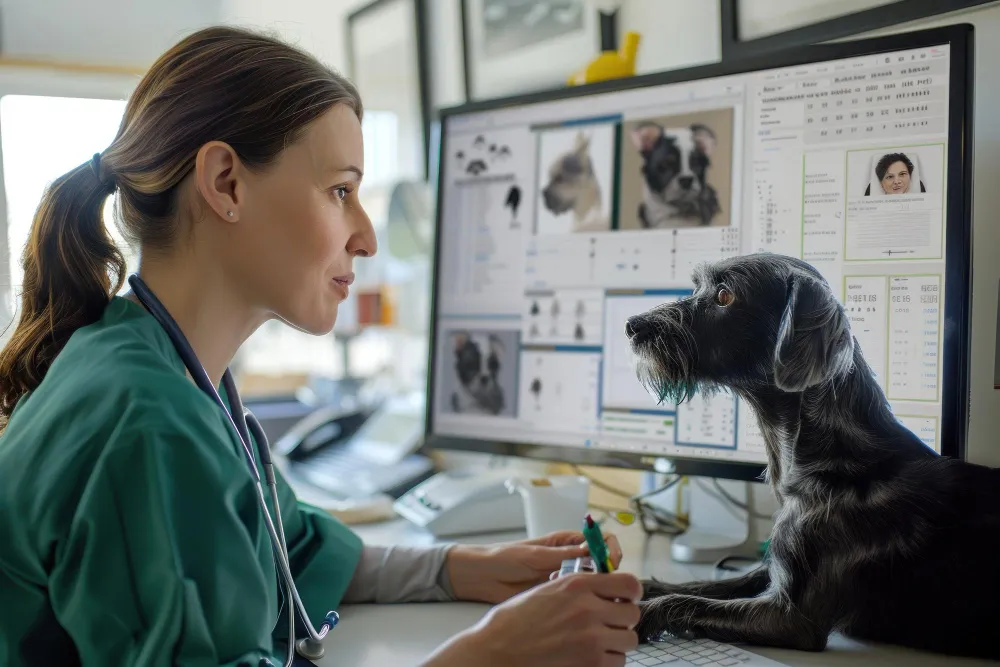
Tools that plan content, collect reviews, elicit client feedback, and track performance across channels.
Why it matters
A robust online presence brings in new customers and builds trust. Regular content and active review management enhance reputation and local search rankings.
Main Functions:
- Facebook, Instagram, and LinkedIn post scheduling.
- Automated review request after visits.
- Social sentiment and listening dashboards.
- Content libraries (educational content, before/after, staff features).
Operational best practices:
- Develop a regular content calendar to suit seasonal topics of care.
- Automate review requests with controls to ensure a prompt response to negative comments.
- Train a specific staff member to handle community engagement.
6. Controlled Drug / Regulated Substance Tracking Systems
![]()
In order to precisely record prohibited drugs, schedule reports, and create audit-ready trails, this cloud-based system takes the role of paper logs.
Why it's important
Manual logs are susceptible to loss or manipulation and may be imprecise. Electronic solutions reduce administrative time and help with DEA/state reporting obligations.
- Key features include on-the-spot logging via barcode/QR scanning.
- Audit trails with time stamps and user authentication.
- Reconciliation through integration with pharmaceutical and PIMS systems.
- Automated reporting exports for audits.
Implementation tips:
- Phase in gradually; operate parallel paper and electronic logs until at ease.
- Train employees on scanning and reconciliation processes.
- Restrict access and implement role-based permissions.
7. AI Chatbots, Dictation & Workflows

AI capabilities that power administrative workflows: appointment scheduling chatbots, auto-responders, filling of intake forms, and dictation/transcription for clinical documentation.
Why it matters:
AI makes repetitive tasks a thing of the past, speeds up charting, and enables staff to do more productive work, but human oversight remains essential.
Common AI uses:
- Chatbots for FAQs, scheduling, and triage.
- AI dictation that converts visit notes into the EMR.
- Automated review responses or sentiment flagging for nasty feedback.
Best Practices to Implement:
- Confirm AI transcriptions for clinical accuracy; require clinician sign-off.
- Provide transparent escalation avenues if chatbots are unable to resolve an issue.
- Avoid over-reliance: staff should audit and step in frequently.
8. AI in Clinical Diagnostics
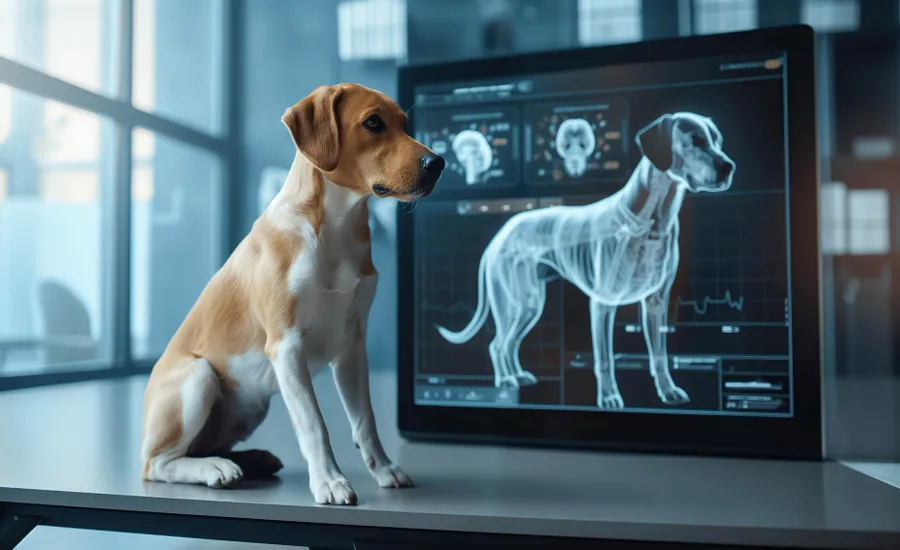
AI and machine learning models are used across imaging (radiographs, ultrasound, CT/MRI), pathology, behavior analysis, and wearable data interpretation.
Why it matters:
AI can identify subtle features, assist in prioritizing important cases, and aid decision-making, making diagnosis more efficient and possibly improving outcomes.
Key Features:
- Abnormality detection in radiographs with AI assistance.
- Automated highlighting of lesions on ultrasound or CT.
- Pattern identification in pathology slides.
- Aggregation of wearable data to detect emerging trends of disease.
Validation & limitations:
- Ensure algorithms are trained on representative populations (breeds, species, ages).
- Use AI as augmentation, not replacement, for veterinary judgment.
- Understand false positive/negative rates; incorporate AI outputs into a formal review process.
Regulatory & ethical notes:
- Ensure vendor transparency regarding training datasets and performance measures.
- Consider informed consent if AI plays a material role in diagnosis or care plans.
9. Digital Radiography & Modern Imaging
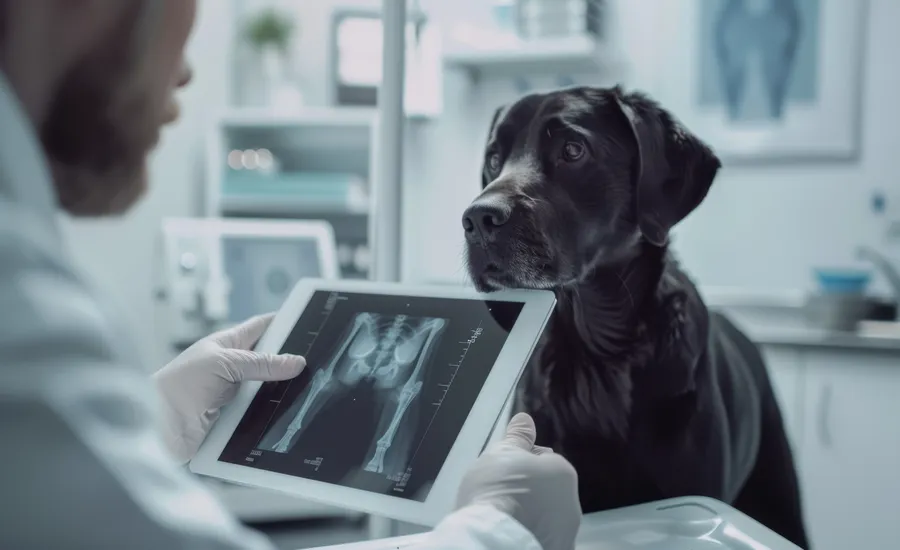
Advanced imaging represents a complete shift from analog film to digital radiography (DR), along with advanced portable X-ray, ultrasound, and CT/MRI for veterinary practice.
Why it matters:
Digital imaging provides on-the-spot acquisition, improved image quality, reduced repeat rates, simpler storage, and effortless EMR integration, preparing clinics for use with AI imaging technology.
Benefits:
- No chemicals or film; on-the-spot viewing.
- Simpler image sharing with specialists.
- Portable digital units facilitate field visits and equine/large animal work.
Implementation considerations:
- Capitalize on equipment, training, and maintenance budget.
- Ensure that PACS or imaging solutions are compatible with your PIMS.
- Train personnel in positioning and radiation safety.
10. Additive Manufacturing (3D Printing)
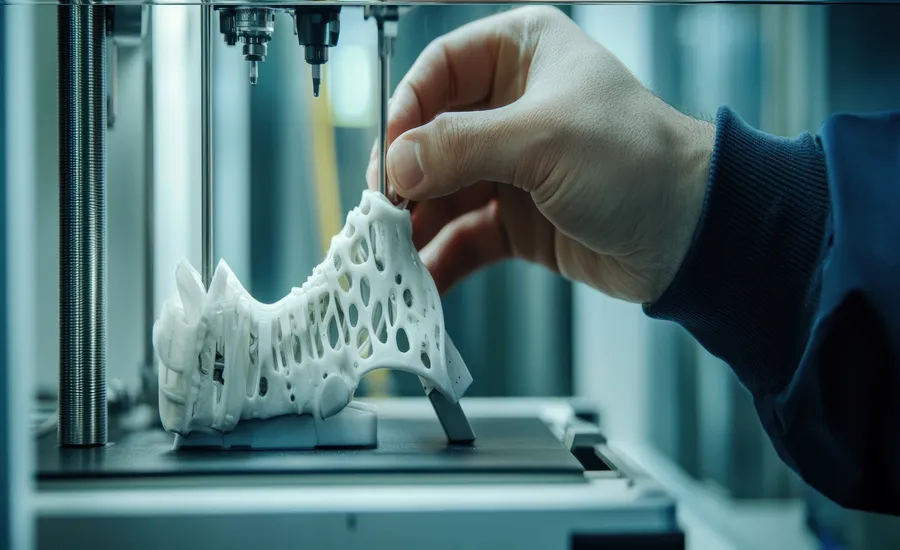
3D printing of surgical models, custom prosthetics, orthotics, implants, and patient-specific surgical guides.
Why it matters:
3D printing cuts the cost and time to make personalized implants or rehearsal models, improving surgical planning and outcomes.
Workflows:
- Acquire high-res imaging (CT/MRI).
- Create a 3D model with CAD software.
- Print in the applicable material (medical-grade polymers, biocompatible materials).
- Sterilize post-process, if necessary, and use in surgery.
How to Prioritize Technology Adoption in Veterinary Practice?
Not every clinic must do it simultaneously. Utilize this prioritized model:
- Repair the basics: PIMS, online scheduling, and auto-reminders; achieving efficiency and revenue gains is a quick win.
- Enhance client experience: Telehealth, client mobile portal, online pharmacy.
- Enhance diagnosis and results with wearable technology, AI workflows, and digital imaging (where evidence-based).
- In-house CT/MRI, 3D printing, and advanced automation are examples of specialized investments that should only be made when volume and return on investment warrant them.
What’s Next
Veterinarian care can be significantly improved by technology, but its success hinges on proper selection, sufficient preparation, and ongoing evaluation. Before going fully live, test more costly technologies like digital imaging, AI systems, or 3D printing. Start with low-cost foundations like PIMS, web booking, and telemedicine.
Always make technology choices that support veterinary clinical goals and client requirements.
Practice managers or clinic owners' next steps:
- For two weeks, conduct a technology assessment: Enumerate every system in operation right now and make a note of any problems.
- Set up three KPIs and a 90-day review schedule: Track income, efficiency, and client happiness.
- Give a thorough explanation of the plan: Inform customers and staff about the training timetable.
Your veterinary staff may work more efficiently and focus on what matters most: providing customers with high-quality care by methodically and carefully integrating technology.
FAQs
1. What are the most common open positions for veterinary practice technicians or managers?
Depending on the practice's size and nature, veterinary practice technicians or managers' positions range from assistant manager, clinic manager, operations manager, to senior management positions like regional or corporate managers.
2. Can I actually adapt the modern technologies in my small veterinary clinic?
Of course! Start with simple, low-cost solutions like web scheduling, telemedicine, and cloud-based PIMS. As your clinic grows, you can scale up gradually rather than implementing all of these at once. For smaller practices, some providers even offer tier-based plans.
3. Can AI and automation replace veterinary staff?
No. AI and automation are designed to support veterinary technicians and practice managers, making tasks like charting, appointment scheduling, or client communication more efficient. Human oversight is always essential to ensure safe and accurate patient care.
4. How can we ensure accurate data from digital tools and wearables?
Always choose validated devices and software. Test them with a small patient group first, integrate the data into your workflow carefully, and interpret results in a clinical context. Technology aids decisions, but it doesn’t replace professional judgment.
5. Are cloud-based practice management systems secure?
Yes, if you select trusted vendors, cloud-based management systems are secure. While considering a cloud-based management system, look for encryption, audit logs, and strong privacy policies. Cloud-based systems are safer than local servers that may not be monitored regularly.
6. How do I implement new technology without disrupting clinic operations?
Start with a technology assessment: identify current gaps, prioritize low-cost foundational tools like PIMS, online scheduling, and telehealth, train staff thoroughly, and gradually roll out more advanced solutions like AI-assisted diagnostics or digital imaging.
7. Do I need to keep legal regulations in mind while implementing a new technology?
Yes, you need to keep the legal regulations in mind. Be aware of state telemedicine regulations, controlled substance reporting, and vendor contracts. Ensure your technology platform complies with privacy and data ownership rules and has protocols for breach notifications.
8. How can technology improve client experience and veterinary clinic efficiency?
Modern tools like telemedicine, online booking, automated reminders, and integrated pharmacy systems streamline operations, reduce errors, save time, and allow your veterinary clinic staff to focus on patient care, ultimately improving client satisfaction.
DVM Central is the trusted veterinary marketplace connecting suppliers, veterinarians, and pet owners, promoting direct buying for quality animal health products, and simplifying veterinary supply transactions.


